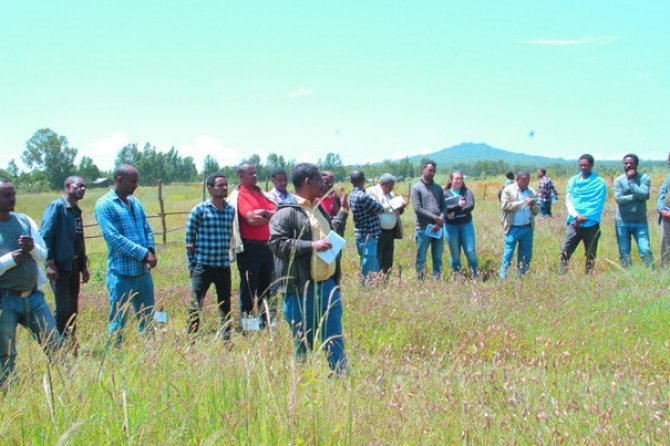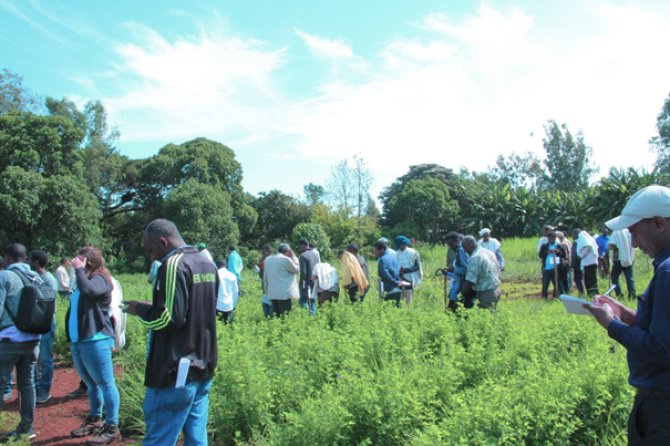
News
BRIDGE research and extension activities start with pilot fodder
SNV and the The Amhara Livestock Agency recently carried out the first demonstration day on fodder research plots that are part of the BRIDGE research activities of Wageningen Livestock Research. This was a first pilot activity stressing the importance of good research-extension linkage activities to build capacity in the dairy sector in Ethiopia. Though still a small pilot, the successful demonstration day will from the base of scaling up this approach in the BRIDGE project.
WLR and SNV are jointly implementing the BRIDGE project in Ethiopia, whereby WLR is responsible for the research on dairy development and SNV on dairy capacity building, amongst whom the dairy extension staff of the Dairy Department of the Ethiopian Ministry of Agriculture.

Good fodder supply major problem
Feed shortage in terms of quantity and quality is the lead problem affecting dairy production and productivity in Ethiopia. Conjugant of this fact, as part of the implementation for the BRIDGE project, WLR together with the Amhara Region SNV office and Mecha district livestock office evaluated/demonstrated the performance of lablab legume, different grass-legume mixtures (grasses: Rhodes, Elephant, Desho and Panicum; legumes: Alfalfa, Desmodium, Stylosanthes), and application of different techniques to improve the production of grazing lands (Lime, Urea, DAP, wood ash and cattle manure).
The field day was organized in the Mecha district, west Amhara cluster with the objective of enabling participants to observe and acquire knowledge and experience from the research. It was also intended to document the views of participants about the research, enable model dairy farmers to cascade the knowledge & skill acquired to their followers, and to build the capacity of partners and project staff in fodder development. A total of 64 participants and nine SNV/WLR staff attended the field day undertaken in the plots of four farmers.
Farmers who participated in the research expressed their happiness with the research which convinced them to allocate more land for fodder development. The owner expressed that the land allocated for research was of very poor production potential. The farmer with grassland and his neighbours were amazed by the immediate response of the land to the different treatments. Following their observation, some of the farmers started to apply the treatments implemented by the research team even before the study is completed.

Scaling up for extension
The Amhara Region Livestock Agency head stressed the need to get ready to scale up the outputs of the research activities once they are completed and made ready for extension. Following all field visits, a general discussion was undertaken and the participants expressed their happiness with the research activities, the lessons they acquired from the different treatments and their willingness to implement the results of the action research.
One key issue raised during the discussion was regarding the forage seed supply system. The BRIDGE project together with development partners will look for possible interventions that will improve the forage seed supply system.